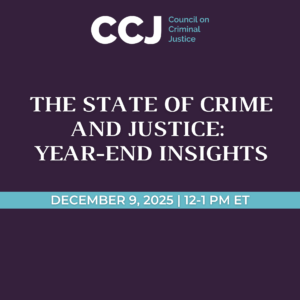Grounding Criminal Justice Policy in Facts and Evidence
Upclose Spotlight



Latest Posts

Who Gets Arrested in America: Trends Across Four Decades, 1980-2024
This comprehensive analysis of arrest trends is the first of its kind since the federal government stopped releasing detailed arrest data in 2020. It shows that arrests fell sharply in 2020 during the pandemic—and have stayed down since then.
Methodology and Data Sources: Arrest Trends in America, 1980-2024
Using multiple federal data sources, this report rebuilds national arrest trend lines across age, gender, race, and offense categories—restoring national visibility into more than 40 years of arrest patterns.

Event Recording: The State of Crime and Justice: Year-End Insights
Leaders from the Council on Criminal Justice Centering Justice project and other experts discussed what the criminal justice field faced in 2025 and what we might expect in 2026.

Small Grants, Big Impact: How Microgrants Can Boost Community Safety and Justice
Federal grantmaking is a complex process that often leaves out smaller groups and rural communities. This Justice in Perspective brief highlights a microgrant funding strategy, which helps fill this gap by broadening the reach of federal public safety grants.

UpClose With Heather Rice-Minus
This month’s spotlighted member is Heather Rice-Minus, president and CEO of the Prison Fellowship.

Crime in New York City: What You Need to Know
President Trump announced in late October that he would consider dispatching military troops to New York City. This brief examines six-month trends for five different crime types in NYC.

